NEW ZEALAND
History

History
Cities in NEW ZEALAND
| Auckland | Christchurch | Wellington |
History
Discovery of New Zealand: myth or reality?
New Zealand's earliest history is shrouded in a mixture of fact and fiction, from true to myth. Around the year 925, the Polynesian navigator Kupe is said to have discovered New Zealand. Because of the low hanging clouds, the country was called Aotearoa by him: "the land of long white clouds". He looked at and explored the islands and then returned to the Hawaiki Islands with enthusiastic stories. Some assume that Hawaiki was one of the Society Islands in Eastern Polynesia.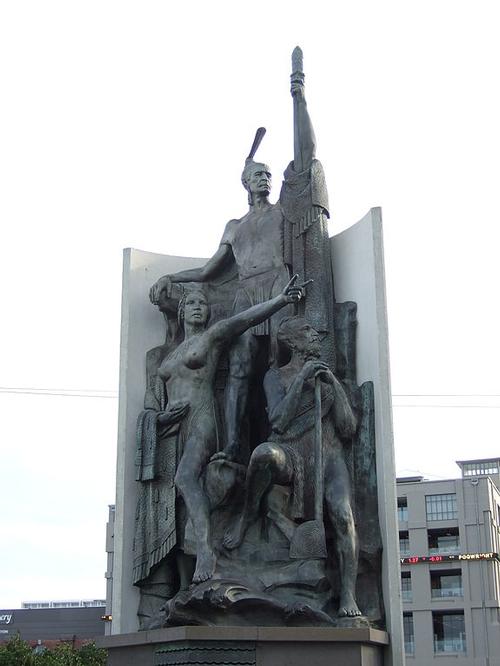 Statue of Kupe, supposed discoverer of New ZealandPhoto: David Han CC 2.0 Generic no changes made
Statue of Kupe, supposed discoverer of New ZealandPhoto: David Han CC 2.0 Generic no changes made
It was not until around 1200 that the Maoris returned to New Zealand due to overcrowding, disease, and tribal wars in Hawaiki. Still, New Zealand had been inhabited for several hundred years by primitive tribes who came from the islands of Eastern Polynesia. They were called Morioris and probably crossed to New Zealand and the Chatham Islands around c. 700.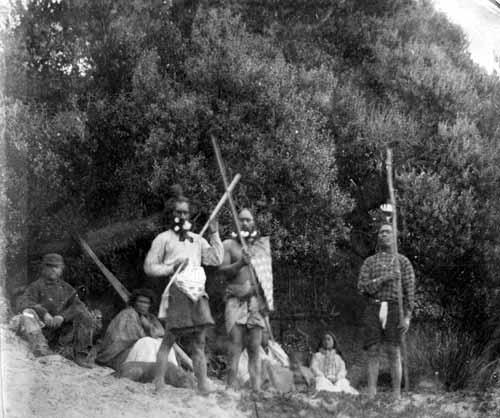 Moriori people, end of 19th century, New ZealandPhoto: Public domain
Moriori people, end of 19th century, New ZealandPhoto: Public domain
They were hunters and fishermen and to a limited extent farmers. They have been largely responsible for the extinction of the Moa, a large wingless bird. The Morioris who settled in the Chatham Islands were not endangered until the 19th century. Due to a lack of weapons, the Morioris in New Zealand had no chance against the warlike Maoris. In 1933 the last thoroughbred Moriori died.
Abel Tasman and James Cook
In 1642 the Dutchman Abel Janszoon Tasman (1603-1659) was commissioned to trace and investigate the "Zuidland" or the "terra incognita Australis". He was commissioned by Governor General Anthony van Diemen and the Council of the Indies. In August 1642 the two ships, the "Heemskerck" and the "Zeehaen" first left for Mauritius to deliver goods and to stock up on water and firewood. From October 8, Tasman headed to present-day Australia and first arrived at an unknown country called "Diemensland", later turned out to be the present-day island of Tasmania. They did not see Australia themselves, but a few weeks later on December 13, 1642 Tasman was the first European to see the west coast of the South Island of New Zealand. Dutchman Abel Tasman discovered New Zealand on December 13th, 1642Photo: National Library of Australia, publiek domein
Dutchman Abel Tasman discovered New Zealand on December 13th, 1642Photo: National Library of Australia, publiek domein
He continued his journey north and on December 19 met a group of hostile Maoris who killed some of his men. The newly discovered land was called "Statenland" and later changed to New Zealand, in honor of the province of Zeeland where so many naval heroes came from. Tasman sailed further north along the west coast of the North Island. The North Cape of New Zealand was called the Cape Maria van Diemen. Some more islands were discovered and then headed for Batavia, where Tasman arrived on June 15, 1643. The VOC was disappointed in the results that Tasman had achieved and he himself reported that the population was so hostile that trading was not yet possible.
More than a century later, the British explorer James Cook (1728-1779) made two trips around the world between 1768 and 1774. On October 7, 1769, he discovered the east coast of the North Island with his ship the "Endeavor". He also discovered the passage between the North and South Island and he did establish good relations with the Maoris. However, the Dutch and the British also showed little interest in New Zealand and still focused on the Dutch East Indies and India, respectively.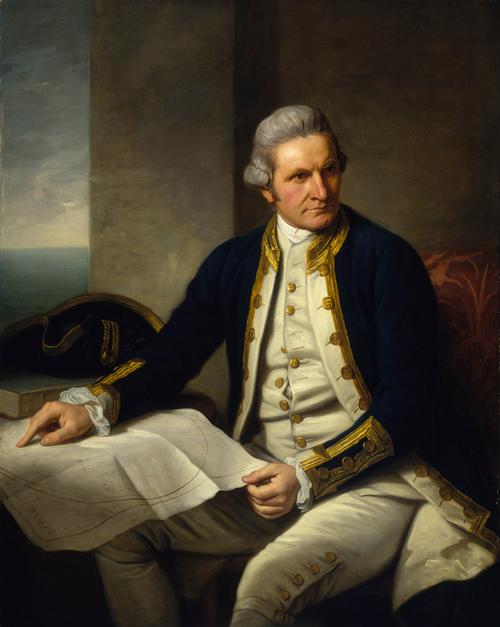 James Cook, discovered the east coast of New Zealand in 1769Photo: National Maritime Museum, United Kingdom, public domain
James Cook, discovered the east coast of New Zealand in 1769Photo: National Maritime Museum, United Kingdom, public domain
Coromandèl
Coromandèl is the name of a small trading post (factory) of the VOC on the North Island of what is now New Zealand. The factory was founded by the crew of a lost ship. Spices were traded with the population here and shipped to the Netherlands.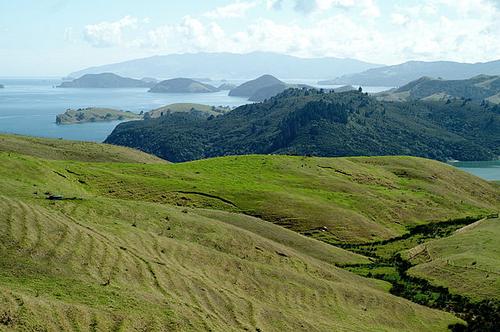 Coromandel Peninsula, New ZealandPhoto: Alexander Klink CC 3.0 Unported no changes made
Coromandel Peninsula, New ZealandPhoto: Alexander Klink CC 3.0 Unported no changes made
This small trading post was named Coromandèl, and was named after a family member of Abel Tasman. The small area was a Dutch factory between 1687 and 1696. The Dutch left the trading post on the North Island in 1696 when it no longer yielded much profit.
New Zealand becomes a British colony
The first whalers reached New Zealand in the early 1800s. They came from Tasmania and Australia and settled in the Bay of Islands, the northern part of North Island. There was even some trade between the Maoris and Britain sent a number of missionaries to this area. Furthermore, Britain's meddling did not continue until the French came on the scene. They were interested in New Zealand, with the result that on 30 January 1840 the British proclaimed sovereignty over New Zealand. After that, a treaty was quickly concluded between the Maoris and the British, the Treaty of Waitangi on February 6, 1840.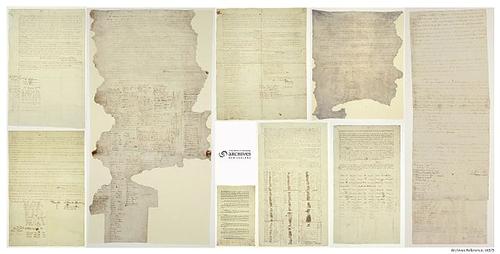 Te Tiriti o Waitangi - The Treaty of WaitangiPhoto: Archives New Zealand CC 2.0 Generic no changes made
Te Tiriti o Waitangi - The Treaty of WaitangiPhoto: Archives New Zealand CC 2.0 Generic no changes made
New Zealand became a British colony and the French were defeted. Through this treaty, the Maoris recognized the sovereignty of Great Britain and, in turn, the Maoris gained the same rights as British subjects and also recognized the ownership of their land. This last point later caused major problems due to differences in interpretation. The Maoris thought they still owned all New Zealand land. The British only meant the land that the Maori worked and cultivated at the time. This gave rise to bloody conflicts such as the Taranaki War, also known as the First Maori War. The British settlement in Taranaki was set on fire and destroyed by the Maoris. An army of ten thousand British soldiers retaliated in a battle that would last another five years.
After the treaty was signed, the British decided to take a structured approach to the colonization of New Zealand. To this end, the New Zealand Company was founded in 1840 by Edward Gibbon Wakefield (1796-1862).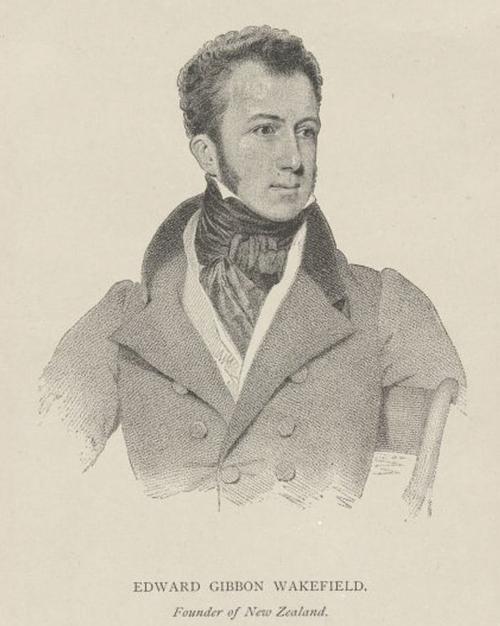 Edward Gibbon Wakefield New ZealandPhoto: Benjamin Holl (1808-1884) in the public domain
Edward Gibbon Wakefield New ZealandPhoto: Benjamin Holl (1808-1884) in the public domain
It was decided to sell the land at set prices and the money was used to pay for the emigrants' crossing. This was so attractive that all the land was sold within a few months. When the first settlers arrived, however, more land appeared to have been sold than was actually available. The British government stepped into the breach and started to buy land on a large scale, which meant that the colonization was completed and the New Zealand Company could be dissolved. The city of Wellington was also founded around this time.
To restore order, George Grey was sent to New Zealand as Governor of Special Powers in 1845. Gray, on the one hand, acted very hard, but on the other hand regained the confidence of the Maoris through honest action. On December 23, 1846, New Zealand received a new constitution. It was given the names New Munster and New Ulster and was divided into provinces, each under its own governor. In 1848, the constitution was provisionally inactivated. The New Zealand Company was dissolved in 1851 and a new constitution was issued in 1852.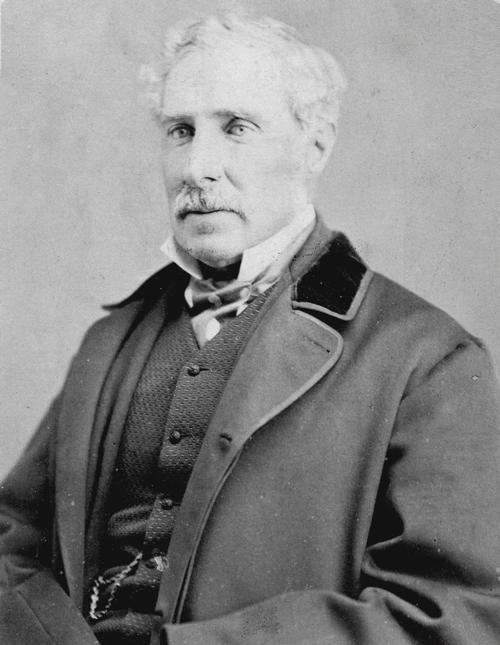 George Grey, prime minister New ZealandPhoto: William Henry Whitmore Davis in the public domain
George Grey, prime minister New ZealandPhoto: William Henry Whitmore Davis in the public domain
Provincial councils, a general council next to the governor and a general representative were appointed. The right to vote for all these bodies was tied to the census. This system functioned in a way that actually made the six provinces into so many independent states. The settlement of the relationship to the indigenous people was left to the British government. In 1856 New Zealand was granted a degree of autonomy. Meanwhile, the Maoris felt cornered by the government's increasing land purchases, while the white population, feeling the growing tension among the Maoris, feared its extermination. That is how the Second Maori War (1860-1870) came about, in fact a series of bloody disturbances that were mainly confined to the North Island. The Maoris attempted to unite under a king, but failed. Their Hau-Haub movement (since 1865), which was based on an ideology that mixed elements of its own and biblical faith, targeted Christianity and foreign domination. However, the Maoris were unable to survive.
They lost their land through forced sale or confiscation. A huge influx of settlers had since followed the discovery of gold at Otago (1861). In 1862, the system of land pre-emption was abandoned by the government, removing the last protection of the indigenous people from the loss of land ownership. In 1865 Wellington became capital of New Zealand. From 1870 to 1890, one ministry, under Sir Harry Atkinson, was in government. This period was marked by a deep depression, and government and government were centralized again in 1875. The introduction of cooling chambers on ships meant a revolution for New Zealand (1882) because sheep were now also bred for slaughter. In 1881, the first measures against mass immigration of Chinese workers were taken.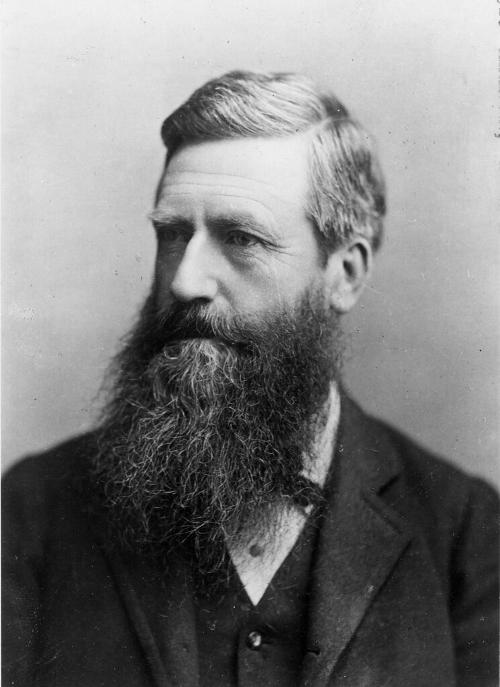 Sir Harry Atkinson New ZealandPhoto: Unknown in the public domain
Sir Harry Atkinson New ZealandPhoto: Unknown in the public domain
In 1887, the Kermadece Islands were annexed and in 1900 the Cook Islands, Savage Island and Suvorov Island. General male suffrage was introduced in 1889, and in 1890 the combined liberal and workers' parties came into government.
Through unique social legislation, state socialism and economic planning, enormous progress was made in the next twenty years. Agriculture was intensified; small land ownership was greatly favored. In 1893 the women also got the right to vote and in 1909 the Labor Party, which had formed a whole with the Liberal Party, seceded as a separate party. Major strikes occurred during this time. In 1912, the conservative National Party came back into government. Meanwhile, New Zealand had become an autonomous dominion on September 26, 1907. In both World War I and World War II, New Zealand soldiers along with Australian soldiers formed the ANZAC, Australia, New Zealand Army Corps, which fought in Europe, Africa, and Asia against the Germans and Japanese. In 1919, Western Samoa became New Zealand's mandate territory. In 1930 New Zealand was severely affected by the world crisis and the government proceeded to drastically cut costs and cut wages, among other things. Extensive social legislation was also largely ineffective. The Labor Party then entered the opposition but again won the elections in November 1935. Michael Joseph Savage (1872-1940) then came with a Labor cabinet and the government nationalized banking, regulated exports, restored the arbitration system in labor disputes, set minimum wages and nationalized railways.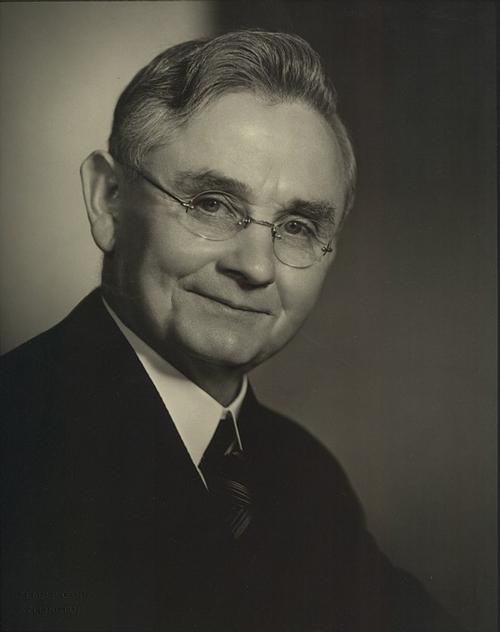 Michael Joseph Savage, 23rd prime minister of New ZealandPhoto: Archives New Zealand CC 2.0 Generic no changes made
Michael Joseph Savage, 23rd prime minister of New ZealandPhoto: Archives New Zealand CC 2.0 Generic no changes made
New Zealand independant
In 1947, New Zealand became an independent, autonomous member of the British Commonwealth. In November 1949, the conservatives under S. Holland returned to government, but the political and social structure no longer changed significantly. The Upper House was dissolved on January 1, 1951. New Zealand's agriculture-oriented economy flourished in the 1950s as never before, and New Zealanders' incomes were very high. However, they "forgot" to industrialize and they remained very dependent on the largest buyer, Great Britain, for exports. In 1957 Labor was able to form a government again under the leadership of W. Nash.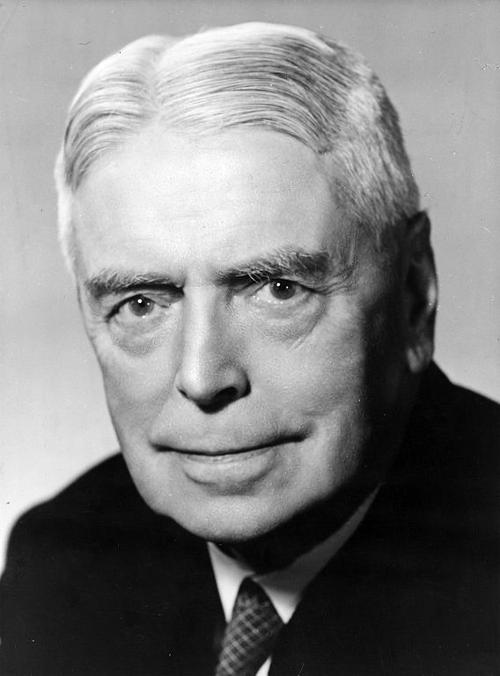 Walter Nash, 27nd prime minister of New ZealandPhoto: Unknown in the public domain
Walter Nash, 27nd prime minister of New ZealandPhoto: Unknown in the public domain
On January 1, 1962, the Western Samoa mandate obtained independence. The government, which has been re-formed by the Conservatives since 1960, backed Malaysia in 1964 with the conflict with Indonesia, and relations with the United States became closer as a result of New Zealand's support for U.S. Vietnam politics. In November 1972, the Conservative National Party had to surrender its majority to the Labor Party. Immediately after taking office, new Prime Minister David Lange of the Labor Party announced a docking ban on nuclear-powered war ships in New Zealand ports. This led to great tensions with the United States and Australia. In 1973, Britain joined the EEC, which, together with the oil crisis, caused an economic disaster. Agricultural products were now mainly imported from the EC countries.
New Zealand had to borrow a lot of money, causing the foreign debt to rise sharply, resulting in enormous inflation. Even now, this situation is still slowly changing for the better. November 1975 elections brought the National Party, now led by Robert Muldoon (1921-1992), another victory.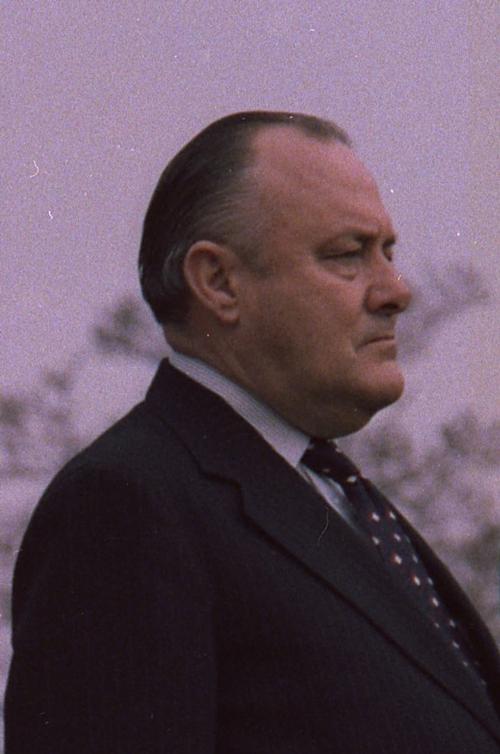 Robert Muldoon, prime minister of New ZealandPhoto: Unknown in the public domain
Robert Muldoon, prime minister of New ZealandPhoto: Unknown in the public domain
They remained in government until 1984. However, Muldoon lost the 1984 elections after a conflict over whether or not workers were free to join a union of their choice. In 1985, New Zealand hit the headlines when the French were sunk the Rainbow Warrior in Auckland harbor. The Greenpeace ship took action against French nuclear tests in the South Pacific.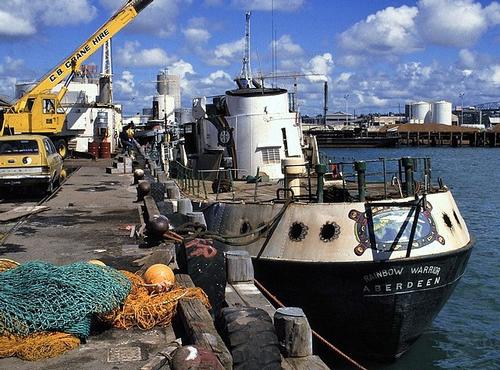 Rainbow Warrior in the harbour of Auckland, New ZealandPhoto: Ot CC 4.0 International no changes made
Rainbow Warrior in the harbour of Auckland, New ZealandPhoto: Ot CC 4.0 International no changes made
National Party and Labor alternate
David Lange's Labor Party (1942-2005) came to power in 1984; they focused more on privatization, deregulation and the elimination of subsidies. This reduced the budget deficit, but unemployment continued to rise.Lange (labourparty) was reelected in 1987 and began privatizing many state-owned companies. However, his popularity quickly declined, also within the Labor Party.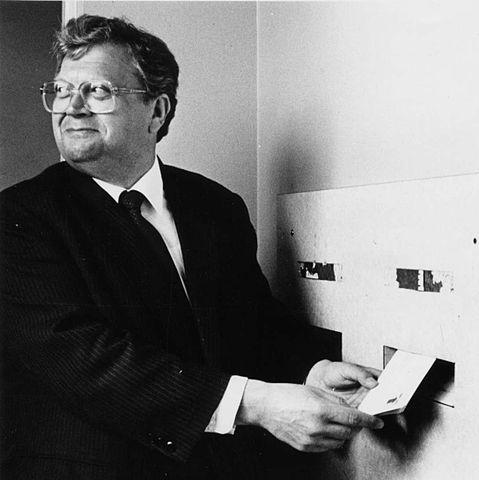 David Lange, prime minister of New ZealandPhoto: Courtesy of Horowhenua Historical Society inc, Levin, New Zealand CC 3.0 no changes made
David Lange, prime minister of New ZealandPhoto: Courtesy of Horowhenua Historical Society inc, Levin, New Zealand CC 3.0 no changes made
He resigned in 1988 and was succeeded by G. Palmer. He pursued an economically laissez-faire policy and, for lack of results, also had to leave the field prematurely and was replaced in the late 1990s by M. Moore. Elections in 1990 yielded another major victory for the National Party after six years of Labor rule, whose new leader, James Brendon Bolger, became prime minister. Major cutbacks in social security were initiated in 1991. The 1990 elections were won by the National Party led by James Brendon Bolger. He continued on the chosen path and the reforms were now working out well. In 1992, an agreement was reached between the government and the Maoris on the regulation of fishing rights, as enshrined in the Waitangi Convention (1840). The Maoris (12% of the population) received 50% of domestic fishing under the agreement.
In 1993, the system of proportional representation was adopted by referendum. This meant that small parties can also get a vote in parliament. After the first new-style elections, Maori-dominated New Zealand First took on a key role in New Zealand politics, with the November 1993 elections gaining 50 of the 99 seats. Bolger stayed on, but was forced to make concessions to his hardline of economic reform.
In the simultaneous referendum on the future electoral system, a majority voted in favor of proportional representation, leaving the existing district system. In 1995 the economy grew strongly in a highly liberalized climate. Prime Minister Bolger of the National Party formed a coalition with the United Party in late February 1996, which allowed the government to count on a majority of one seat in parliament.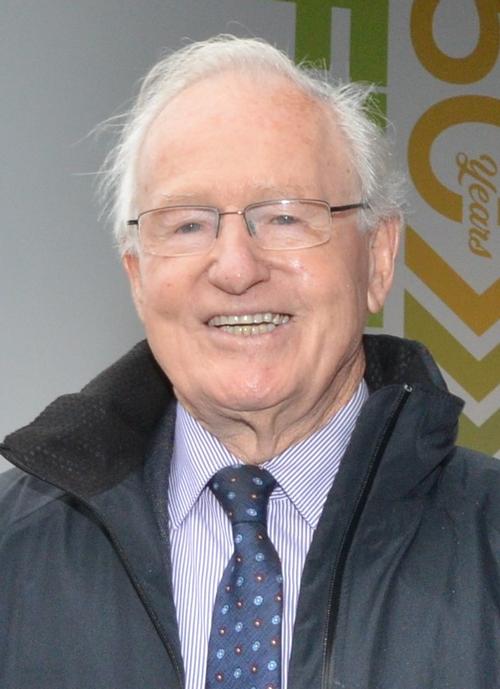 Jim Bolger, 35th prime minister of New ZealandPhoto: New Zealand Government, Office of the Governor-General CC 4.0 no changes made
Jim Bolger, 35th prime minister of New ZealandPhoto: New Zealand Government, Office of the Governor-General CC 4.0 no changes made
The parliamentary elections of October 1996 meant a significant loss to the National Party, but in December Bolger nevertheless formed his third cabinet, a coalition with the New Zealand First Party (NZFP). After some unclear political maneuvering, New Zealand gets the first female prime minister with Jenny Shipley and Bolger is forced to step down.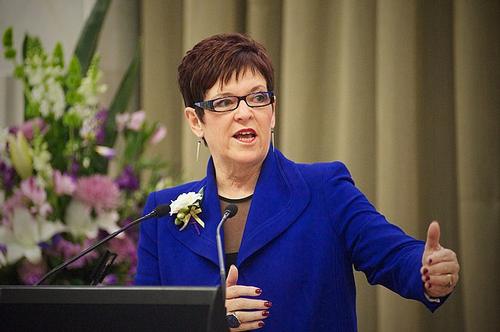 Jenny Shipley, first female prime minister of New ZealandPhoto: New Zealand Ministry for Women CC 4.0 International no changes made
Jenny Shipley, first female prime minister of New ZealandPhoto: New Zealand Ministry for Women CC 4.0 International no changes made
Bolger was abroad at the time, when Labor won elections in November 1999 and Helen Clark became the first elected female prime minister. Labor formed a coalition with the left-wing Alliance Party, but rely heavily on support from the Greens.
In the September 17, 2005 parliamentary election, Prime Minister Helen Clark's Labor Party, with 50 seats (41% of the vote), was one seat ahead of Don Brash's opposition National Party (49 seats, 40%). Labor thus lost two seats compared to the elections in 2002, National won 22 seats at the expense of the small parties. Although the "Foreshore and Seabed" issue of Maori claims to the New Zealand coastal area dominated political debate during the recent reign, this was eclipsed by the theme of tax cuts in the election battle. However, the Labor-based Maori Party has achieved four seats.
On October 17, 2005, Helen Clark ushered in her third reign with the announcement of the new cabinet. This makes her the longest serving Labor Prime Minister in New Zealand history. Clark has partnered with Jim Anderton's Progressive Party to form a minority cabinet, supported by New Zealand First and United Future through a Confidence and Supply Agreement. With this, the necessary 61 seats have been achieved. Since they are not part of the coalition, the leaders of the latter two parties have been appointed as 'Ministers outside Cabinet'. New Zealand First leader Winston Peters has become Secretary of State and United Future leader Peter Dunne has become Minister of Revenue ('Revenue'). In October 2007, Maori activists are arrested on charges of planning violent actions.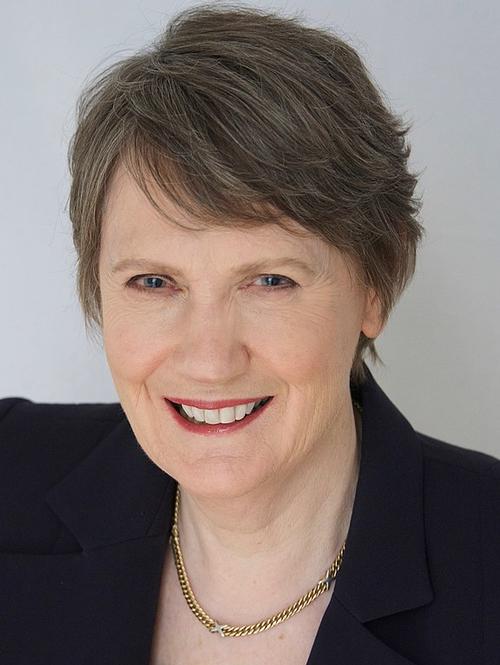 Helen Clark, 37th prime minister of New ZealandPhoto: Global Commission on Drug Policy CC 3.0 Unported no changes made
Helen Clark, 37th prime minister of New ZealandPhoto: Global Commission on Drug Policy CC 3.0 Unported no changes made
In November 2008 John Key leads the center-right National Party to an election victory. In June 2009, the economy shrank in a row for the fifth quarter, marking the longest recession in New Zealand. In November 2009, 6.5% of the population was unemployed, the highest percentage in 9 years. In January 2010, relations with Fiji are restored following months of diplomatic feud over visas for the military government of Fiji. In early September 2010, Christchurch, the largest city on the South Island, was hit by an earthquake measuring 7.1 on the Richter scale. It was the worst earthquake in New Zealand in the last eighty years; almost two thirds of the 160,000 homes in and around the city were more or less damaged.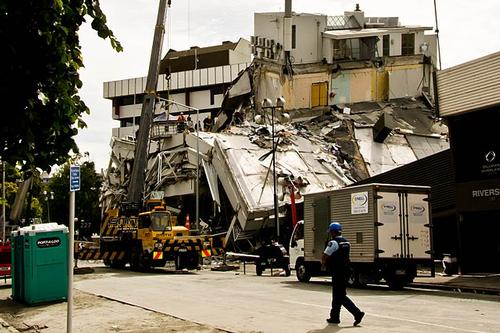 Earthquake ChristchurchPhoto: Gabriel CC 2.0 Generic no changes made
Earthquake ChristchurchPhoto: Gabriel CC 2.0 Generic no changes made John Key, 38th prime minister of New ZealandPhoto: UNDP CC 2.0 Generic no changes made
John Key, 38th prime minister of New ZealandPhoto: UNDP CC 2.0 Generic no changes made
John Key wins the election in 2011. In April 2013, New Zealand became the first country in Oceania to legalize same-sex marriage. At the end of 2013 and the beginning of 2014, New Zealand will again have to deal with a number of earthquakes, but the damage is not too bad. Prime Minister Key won the parliamentary elections in September 2014. His national party remains in power with the help of three smaller parties. In 2015 and 2016, New Zealand occupied a seat on the UN Security Council. John Key unexpectedly resigns in December 2016 and is succeeded by Bill English.
 Jacinda Ardern, 39th prime minister of New ZealandPhoto:Labour Party CC 3.0 New Zealand no changes made
Jacinda Ardern, 39th prime minister of New ZealandPhoto:Labour Party CC 3.0 New Zealand no changes made
The October 2017 elections do not give a clear result Jacinda Ardern of the Labor Party forms a coalition government. Her centre-left party trailed the previously ruling conservative National Party on election night, and required the combined support of the populist New Zealand First party and the Greens to confirm a majority government. She won praise at home and abroad for her handling of two major crises - the 2019 Christchurch mosque shooting, and the 2020 Covid-19 pandemic. Ardern won a landslide victory at the October 2020 parliamentary elections. In October 2021 Dame Cindy Kiro is sworn in as the 22nd Governor-General. Next elections are scheduled for 2023.
Sources
Driessen, J. / Reishandboek Nieuw-Zeeland
Elmar
Gebauer, B. / Nieuw-Zeeland
Lannoo
Gebauer, B. / Nieuw-Zeeland
Elmar
Hanna, N. / Nieuw-Zeeland
Kosmos-Z&K
Harper, L. / New Zealand
Rough Guides
New Zealand
Macmillan
Te gast in Nieuw-Zeeland
Informatie Verre Reizen
Williams, J. / New Zealand
Lonely Planet
CIA - World Factbook
BBC - Country Profiles
Copyright: Team The World of Info